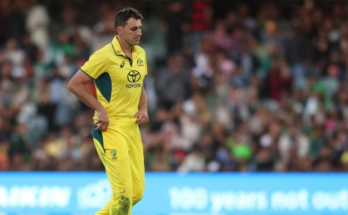Thirty-three wickets fell in less than five sessions in Cape Town as India recorded a chaotic victory over South Africa to level the two-match series. However, the difficulties players had batting on the pitch mean it could be in line for an unfavourable ICC rating.
The Test match at Newlands was the shortest completed game on record after the hosts were bowled out for 55 on the first day. India subsequently suffered a devastating collapse in the evening session, losing six wickets in the space of two overs to make South Africa begin their second innings on Day One. Despite Aiden Markram’s magnificent century on Day Two, South Africa were bowled out for 176 just before Lunch, leaving India to chase 79 to win.
Although both of the seam attacks are among the best in the world, with Mohammed Siraj and Jasprit Bumrah both taking six-fors, the pitch generated inconsistent bounce from the outset. There was a good covering of grass on the wicket and some balls reared up off a length while others shot along the ground. The ball Kagiso Rabada bowled to Shubman Gill as India closed in on victory pitched on a length but shot under Gill’s bat and onto his stumps.
“The bounce was a little bit inconsistent with some keeping low and some bouncing quite steeply,” said South Africa coach Ashwell Prince after day one. “There’s also the seam movement, which you don’t mind on day one but if you have the seam movement with consistent bounce, then it’s a different situation.”
In his post-match press conference, Rohit Sharma criticised the ICC’s criteria for rating pitches following their recent rulings. “Honestly, I would like to see how the pitches are rated,” said Rohit. “Whatever… that chart, I would love to see it, how they rate the pitches, because Mumbai, Bangalore, Cape Town, Centurion, all different venues, overhead conditions are different. The pitches deteriorate quite fast when the sun is beating down that hard on the pitch.
“And in India as well, we know that the conditions in India will spin without a doubt, but obviously people don’t like it because it spins from day one. But that’s not the point. If the ball seams from ball one, that’s okay, right, for everyone? That’s not fair. The ball starts spinning from ball one, it should be okay, in my opinion.”
There was also significant discussion online over whether the pitch should be given a poor rating.
Why we so scared of cracks?
Think Sydney, Perth. Cracks so wide you can park a car inside them, and yet they always get to days 4 and 5! Pointless a test being over so fast you don’t even see a hint of a crack.
Pitches deteriorate over the days, let it happen. Two day tests are…— Dale Steyn (@DaleSteyn62) January 4, 2024
If a subcontinent Test would have finished inside 2 days, the reactions would be quite different to say the least. #SAvIND pic.twitter.com/yNQSxPAobN
— Wasim Jaffer (@WasimJaffer14) January 4, 2024
The ICC can give pitches one of six ratings: Very Good, Good, Average, Below Average, Poor or Unfit. If a pitch is rated from ‘Below Average’ to ‘Unfit’, the host venue will receive demerit points which will remain active for a five-year period. When a host venue accumulates a total of five or more demerit points it will have it’s accreditation to host international matches revoked for 12 months.
The criteria for a pitch to be given a ‘Poor’ rating is specified as a pitch: “That does not allow an even contest between bat and ball, either by favouring the batters too much, and not giving the bowlers (seam and spin) from either team sufficient opportunity to take wickets, or by favouring the bowlers too much (seam or spin), and not giving the batters from either team the opportunity to make runs.
“If any of the following criteria apply, a pitch may be rated “poor”:
- The pitch offers excessive seam movement at any stage of the match
- The pitch displays excessive unevenness of bounce for any bowler at any stage of the match
- The pitch offers excessive assistance to spin bowlers, especially early in the match
- The pitch displays little or no seam movement or turn at any stage in the match together with no significant bounce or carry, thereby depriving the bowlers of a fair contest between bat and ball.
- The pitch displays excessive moisture making its playing characteristics unpredictable, or excessive dryness leading to the surface to deteriorate.”
The pitch on which the World Cup final was played on in Ahmedabad was rated by the ICC as ‘Average’ after India struggled to make 240 before Australia chased down their total with ease thanks to Travis Head’s century. Early last year, the third Test of the Border-Gavaskar Trophy in Indore was given a ‘Poor’ rating, with match referee Chris Broad stating: “The fifth ball of the match broke through the pitch surface and continued to occasionally break the surface providing little or no seam movement and there was excessive and uneven bounce throughout the match.”
After the pitch for the first Test between India and the West Indies at Roseau Park was given a rating of ‘Below Average’ in July last year due to the assistance spinners found on the surface from Day One, the rating was later changed to ‘Average’.
While both of these recent examples relate to point three on the ICC’s ‘Poor’ criteria, point two is where the Cape Town pitch could be in trouble. With ‘excessive’ unevenness of bounce defined as ‘too much’, it will be up to the match referee (once again Chris Broad) to deem whether the unpredictable bounce was severe enough to meet that criteria.
Subscribe to the Wisden Cricket YouTube channel for post-match analysis, player interviews, and much more.



